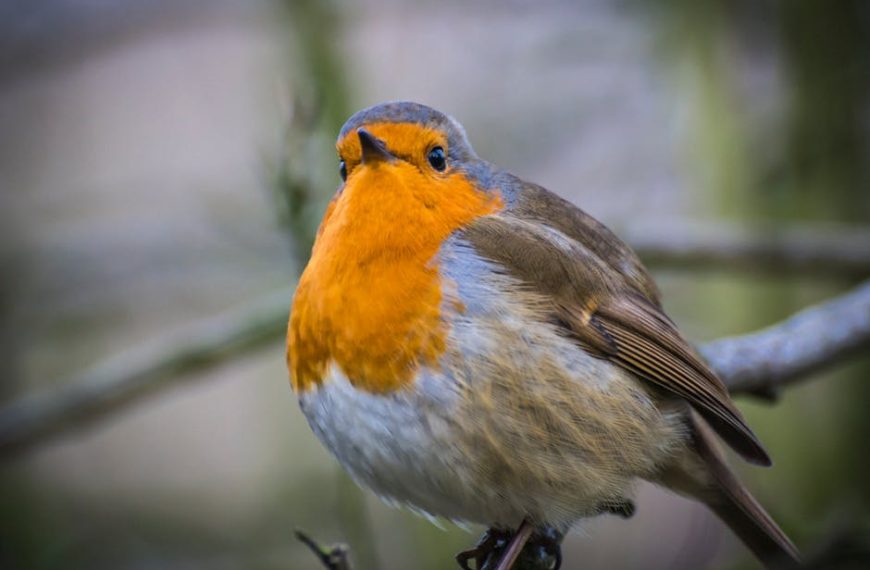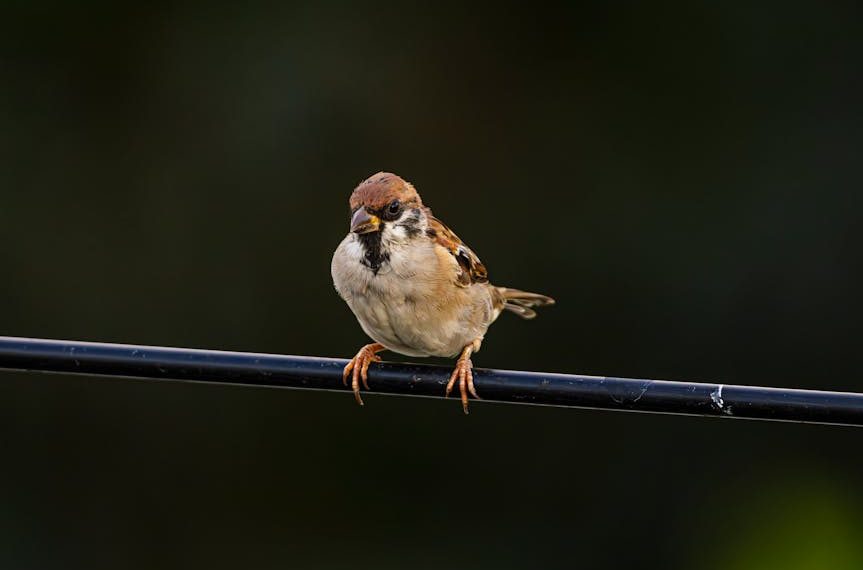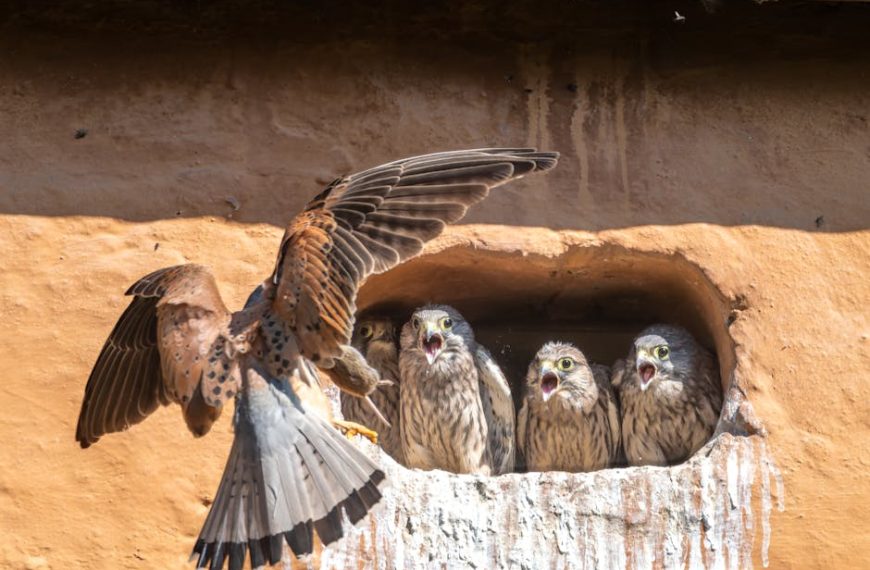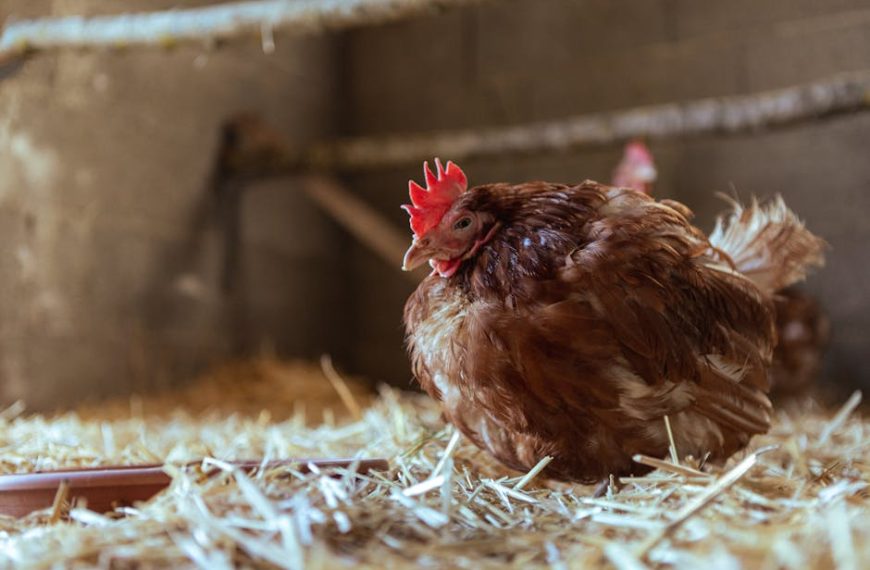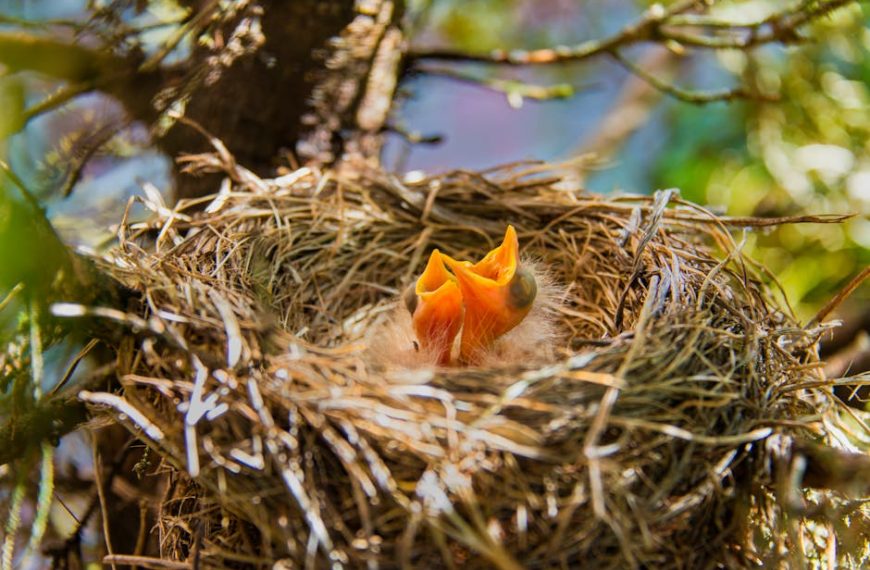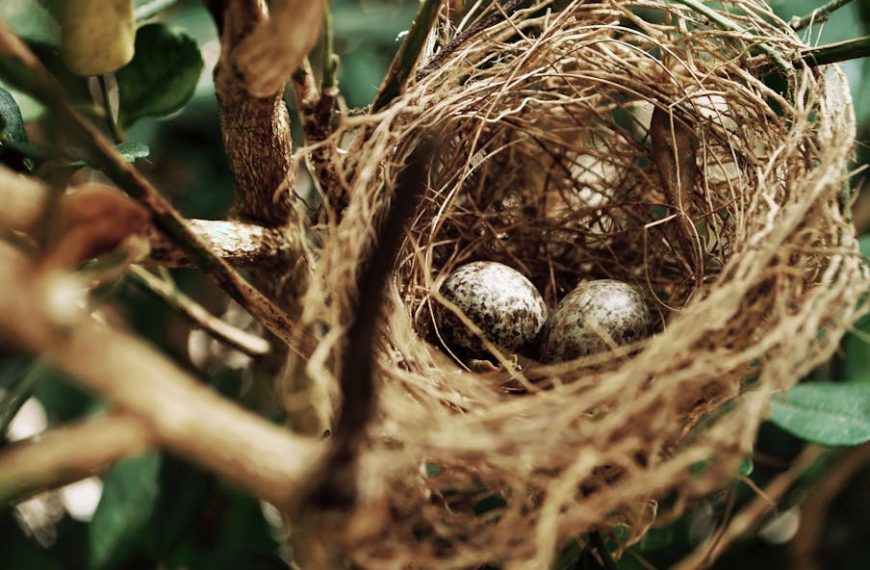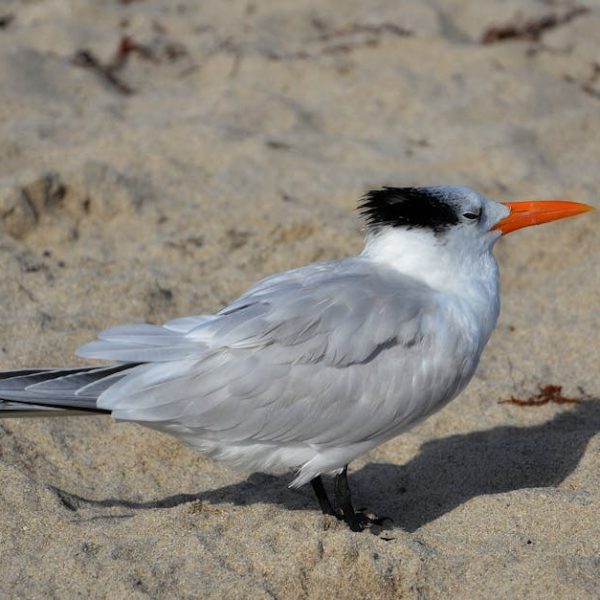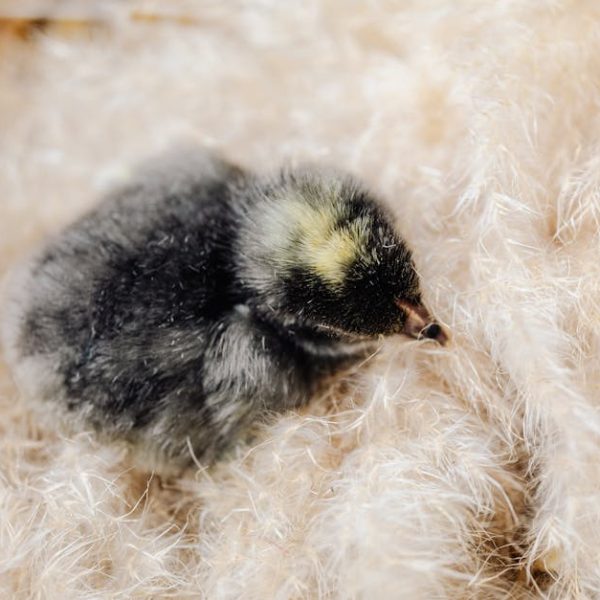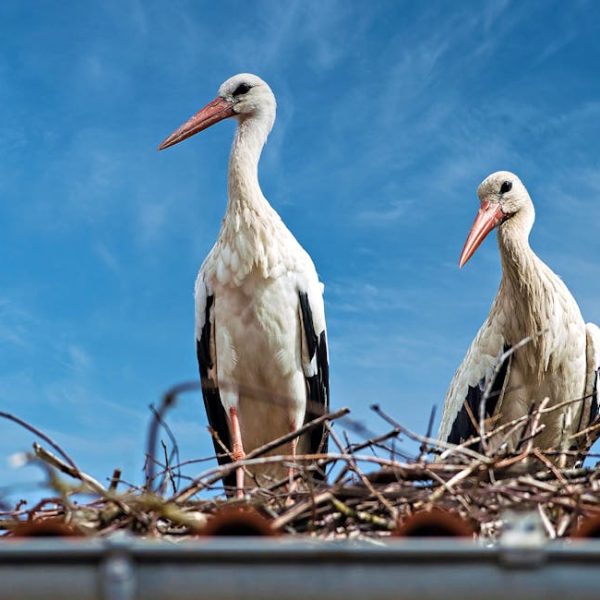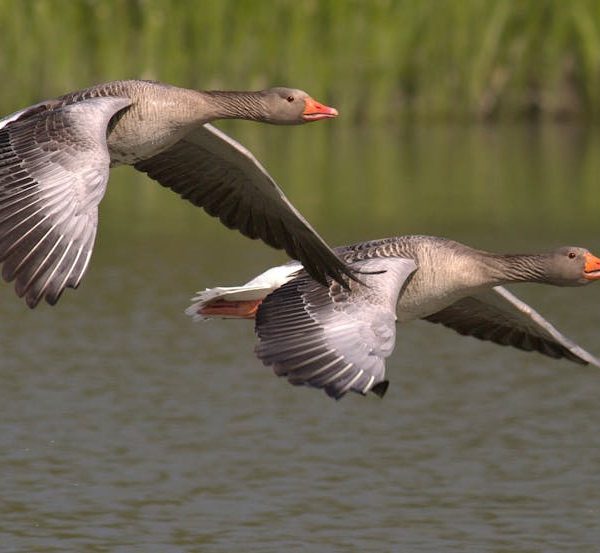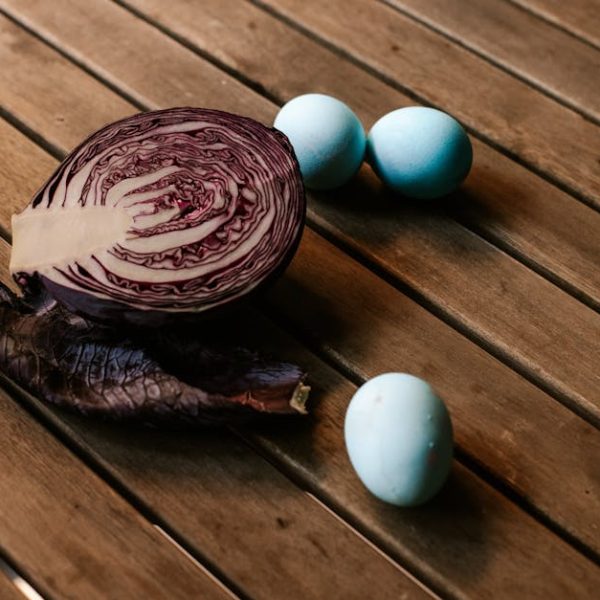In North Carolina, birdwatchers and nature enthusiasts alike take delight in the rich bird diversity found within the region. Among this diverse avian population, a few bird species lay eggs with a captivating shade of blue, drawing the focal point of curiosity. From the classic Eastern Bluebirds to the vibrant Blue Jays, bird species in North Carolina exhibit something magical and mysterious in their blue egg phenomena.
Eastern Bluebirds: The Classic Blue Egg Layers
Known for their vibrant royal-blue backs and rust-colored breast, Eastern Bluebirds (Sialia sialis) are familiar and beloved residents across North Carolina. These medium-sized birds inhabit open country with scattered trees, a habitat created by humans through clearing forests for farmland. Alongside their striking appearance, a distinguishing trait of these birds is their beautiful blue eggs. Eastern Bluebirds typically lay 4 to 7 eggs per brood, presenting a magnificent blue hue that stands out in their cozy nest.
The blue color of these eggs is caused by biliverdin, a pigment the mother bird’s body deposit during egg formation. Fascinatingly, not all bluebird eggs are blue. Sometimes, bluebirds will lay white eggs, which simply indicates that less biliverdin was deposited during that egg’s formation.
Checklist for Identifying Eastern Bluebirds:
- Vocalizations: a short, dropping warble or a dry, short ‘chur’
- Field marks: Vibrant royal-blue back, rust-colored breast, and white belly
- Egg characteristics: Solid, light blue color
American Robin: The Early Risers
American Robins (Turdus migratorius) are cheery, familiar songbirds known for their ruddy orange bellies and hearty appetite for earthworms and fruit. They inhabit woodlands, fields, gardens, and agricultural lands across North Carolina and can often be spotted on suburban lawns. Besides their beautiful appearance and joyful song, American Robins are famous for their bright blue eggs.
The eggs of American Robins carry a richer, deeper shade of blue compared to Eastern Bluebirds. It’s postulated that the strong blue color serves as a disguise, hiding the eggs among the shadows of the nest and foliage.
Pro tips for spotting American Robins and their nests:
- Listen for the cheerful song of the American Robin. It’s one of the earliest bird songs heard at dawn.
- Look for nests made of grass and mud, typically located in dense shrubs or trees.
- Respect bird nesting sites by not disturbing them, especially during breeding season.
Tree Swallow: The Aerial Insectivores
Tree Swallows (Tachycineta bicolor) are sleek, fast-flying birds with glossy blue-green backs and white undersides. They populate open habitats near water and are known for their incredible maneuvering skills during flight, allowing them to deftly catch insects in the air. Tree Swallow nests house small, pale pinkish or bluish-white eggs – not exactly blue, but having bluish hints.
Identifying Tree Swallows eggs and nests:
- Tree Swallows build nests in natural cavities or nest boxes, often lined with feathers.
- Their eggs are small, pale pinkish or bluish-white, often with red-brown speckles.
Common Starling: The Adaptive Opportunists
Common Starlings (Sturnus vulgaris) are chunky and blackish birds with short tails and long, slender beaks. Despite their larger global population, in North Carolina, they are most commonly seen in towns and cities. They lay pale blue or greenish-blue eggs that are more often than not, spotted with rust-brown.
Identifying Common Starling eggs:
- Look for a glossy finish to the eggs, giving them a somewhat shiny appearance.
- Note the rust-brown spots that often cover the pale blue or greenish-blue shell.
Blue Jay: The Beautiful and Bold
Blue Jays (Cyanocitta cristata) are large, bold, and vibrant birds well-known for their brilliant plumage. They display a range of behaviors including tight family bonds, mimicking hawk calls, and incredible migrations. Contrary to their name and the color of their plumage, Blue Jays do not lay blue eggs- they lay eggs that range from nearly white to pale bluish or greenish.
Recognising Blue Jays and their eggs:
- Listen for them mimicking hawk calls.
- Look for their unique, vibrant blue feathers and a pronounced crest on their heads.
- Their eggs range from nearly white to pale bluish or greenish.
The wonderful blue egg phenomena of these North Carolina birds still captivates bird enthusiasts, evoking the magic of nature’s creativity.
Comparing Blue Egg Layers in North Carolina
Comparing the traits of these blue egg-laying birds might offer us more insights into their intriguing nature. From their diet to habitats and egg hues, the table below gives a quick comparison between these bird species.
“`html
| Species | Diet | Preferred Habitat | Egg Color |
|---|---|---|---|
| Eastern Bluebird | Insects, berries | Open country with scattered trees | Light Blue |
| American Robin | Earthworms, fruit, berries | Woodlands, fields, gardens | Deep Blue |
| Tree Swallow | Insects caught in-flight, some berries | Open habitats near water | Pale pinkish or bluish-white |
| Common Starling | Range of insects, seeds, and fruits | Towns and cities | Pale Blue or greenish-blue with rust-brown spots |
| Blue Jay | Nuts, seeds, fruit, insects | Forests, towns, parks | Nearly white to pale bluish or greenish |
“`
The table displays that though each of these bird species share the trait of producing blue eggs, they are vastly different in other aspects, emphasizing the diverse nature of our avian friends.
Conclusion: Unraveling the Blue Egg Mystery
In the end, the captivating blue egg phenomenon among these bird species is just a part of the immense and intriguing bird diversity represented throughout North Carolina. Whether it’s the classic Eastern Bluebirds, the adaptable Common Starlings, or the vibrant Blue Jays, each species assuming their unique ecological roles – those blue eggs are the cherries on top of their already intriguing existence.
Exploring the world of birds opens up a realm of nature’s mesmerizing creativity and adaptability. By appreciating their existence and respecting their habitats, we ensure they continue to thrive, enriching our world beyond blue eggs.
So next time you’re birdwatching in North Carolina, keep an eye out for these blue egg layers and their spectacular nests. And remember, always observe bird nests from a distance, keeping their safety and comfort in paramount. After all, those magical blue eggs deserve to hatch in peace.
Acknowledging the Magic of Nature
Nature has a magic way of instilling beauty into every element, and this certainly extends to the blue eggs of several bird species. As we continue to explore, study, and cherish these marvelous creatures, let’s remember to value the balance of our ecosystems, celebrating and preserving the captivating wonder of nature. Happy birdwatching!
Key Takeaway:
- In North Carolina, several bird species, including Eastern Bluebirds, American Robins, Tree Swallows, Common Starlings, and Blue Jays, lay fascinating blue eggs.
- The blue egg phenomena is caused by the deposition of a pigment known as biliverdin during egg formation.
- Each bird species has unique dietary preferences, habitats, and egg characteristics, highlighting the avian diversity of the region.
- By observing and appreciating these bird species and their captivating blue eggs, we are celebrating the magic and diversity of nature.
Birdwatching opens a window to nature’s creativity and diversity. While exploring the wonderful world of birds in North Carolina, let’s not only focus on their captivating blue eggs but also appreciate their unique roles in the ecosystem. Keeping a respectful distance from their nests ensures their safety and allows us to continue admiring their fascinating existence.
FAQs
Q: Are blue eggs only unique to North Carolina birds?
A: Not at all! Many bird species across the globe lay blue eggs. It’s just that in North Carolina, a few notable species that lay blue eggs have been highlighted.
Q: How do blue eggs benefit the bird species that lay them?
A: Some theories suggest that strong blue colors might help camouflage the eggs among the shadows of nests and foliage. However, more research is needed to conclusively establish the benefits.
Q: Do all blue egg-laying birds lay the same shade of blue eggs?
A: No, the shade and intensity of the blue color can vary between species and even within the same species. For instance, the eggs of American Robins are a deeper, richer shade of blue compared to Eastern Bluebirds.
Q: What should I do if I find a bird’s nest with blue eggs in my backyard?
A: It’s great that you’ve stumbled upon a bird’s nest! However, keep a respectful distance and avoid disturbing the bird’s habitat. Observe the nest from afar and enjoy the marvels of nature.
Q: I found an abandoned blue egg. Can I keep it?
A: While it might be tempting to keep a pretty blue egg, it’s vital to respect wildlife regulations in your area. In many places, it’s illegal to remove eggs from nests, even if they appear abandoned. If you believe a chick is in danger, it’s best to contact a local bird rescue or wildlife rehabilitation center.
Dive deeper into the fascinating world of birds by exploring more posts on our website. Don’t forget to share this article with fellow bird enthusiasts!

